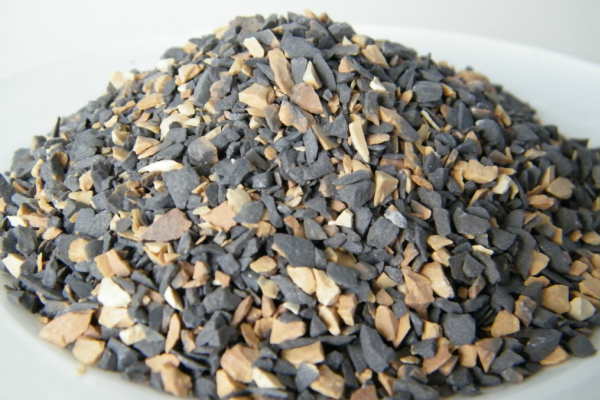Wenn es um Hochtemperaturanwendungen geht, Es ist entscheidend. Mullite -Steine haben sich in diesem Bereich als revolutionäre Lösung entwickelt. Mit ihren außergewöhnlichen thermischen Eigenschaften, Haltbarkeit, und Vielseitigkeit, Diese feuerfesten Ziegel sind zur Wahl für Branchen wie Stahlherstellung geworden, Keramik, und Glasproduktion.


Was sind Mullite -Steine?
Mullite -Ziegel sind feuerfeste Materialien, die hauptsächlich aus einer Kombination von Aluminiumoxid bestehen (Al2O3) und Kieselsäure (SiO2). Die einzigartige Zusammensetzung dieser Ziegel gibt ihnen bemerkenswerte thermische Stabilität und Widerstand gegen hohe Temperaturen. Mullit -feuerfeste Ziegel sind bekannt für ihre hervorragende mechanische Stärke, geringe Wärmeleitfähigkeit, und hoher Widerstand gegen thermischen Schock, sie ideal für Anwendungen mit extremen Wärme und schnellen Temperaturänderungen.
Die Zusammensetzung von Mullite -Ziegeln
Mullite -Ziegel bestehen typischerweise aus der Umgebung 60-80% Alumina und 20-40% Kieselsäure. Das genaue Verhältnis von Aluminiumoxid zu Siliciumdioxid kann je nach den gewünschten Eigenschaften der Ziegel und den spezifischen Anwendungsanforderungen variieren. Der Gehalt mit hoher Aluminiumoxid bietet den Ziegeln hervorragende thermische Stabilität und Korrosionsbeständigkeit, Während der Kieselsäuregehalt ihre mechanische Festigkeit und ihren Widerstand gegen thermischen Schock verstärkt.
Der Herstellungsprozess
Der Herstellungsprozess von Mullite -Ziegeln umfasst mehrere Schritte, Beginnend mit der Auswahl und Vorbereitung von Rohstoffen. Aluminiumoxid- und Kieselsäure-reichen Materialien wie Bauxit, Kaolin, und Alumina-Silica-Gel werden sorgfältig ausgewählt und in den gewünschten Proportionen gemischt. Die Mischung wird dann durch Methoden wie Pressen in Ziegel geformt, Casting, oder Extrusion. Nach der Formung, Die Ziegel unterziehen sich einem Trocknungsprozess, um Feuchtigkeit zu entfernen. Endlich, Die Ziegel werden bei hohen Temperaturen in Öfen abgefeuert, was zu ihrer dichten und dauerhaften Struktur führt.
Vorteile von Mullite -Ziegeln
1. Hohe thermische Stabilität
Mullite -Steine zeigen eine außergewöhnliche thermische Stabilität, Erlauben ihnen, Temperaturen bis zu 1800 ° C zu widerstehen (3272° F). Dies macht sie ideal für Anwendungen in Branchen, die unter extremer Hitze arbeiten, wie Öfen, Öfen, und Verbrennungsanlagen.
2. Geringe Wärmeleitfähigkeit
Mit ihrer niedrigen thermischen Leitfähigkeit, Mullite -Feuersteine minimieren die Wärmeübertragung, Gewährleistung einer effizienten Isolierung in Hochtemperaturumgebungen. Diese Eigenschaft hilft, den Energieverbrauch zu reduzieren und einen stabilen Temperaturgradienten innerhalb der Geräte aufrechtzuerhalten.
3. Ausgezeichnete mechanische Stärke
Mullitfeuerfeuersteine besitzen eine hervorragende mechanische Stärke, Ermöglichen. Dies macht sie für strukturelle Anwendungen in Branchen wie Stahlherstellung geeignet, Wo Stärke und Haltbarkeit von größter Bedeutung sind.
4. Beständigkeit gegen Thermoschock
Eines der bemerkenswerten Merkmale von Mullite -Feuersteinen ist ihr Widerstand gegen den thermischen Schock. Diese Ziegel können schnelle Temperaturänderungen standhalten, ohne ihre strukturelle Integrität zu knacken oder zu verlieren, Es ist ideal für Anwendungen, bei denen schnelle Heiz- und Kühlzyklen beteiligt sind.
5. Korrosionsbeständigkeit
Mullite -Ziegel sind sehr resistent gegen Korrosion und chemische Angriffe. Diese Eigenschaft ist besonders wertvoll in Branchen wie der chemischen Verarbeitung, wo die Exposition gegenüber ätzenden Substanzen häufig vorkommt. The bricks’ resistance to corrosion ensures their longevity and reliability in harsh environments.
6. Vielseitige Anwendungen
Aufgrund ihrer außergewöhnlichen Eigenschaften, Mullite Firebricks finden Anwendungen in einer Vielzahl von Branchen. Sie werden in der Stahlherstellung ausgiebig eingesetzt, Keramik- und Glasproduktion, Petrochemische Verfeinerung, Energieerzeugung, und verschiedene andere Hochtemperaturprozesse.


Anwendungen von Mullite -Ziegeln
1. Stahlherstellung
In der Stahlherstellungsindustrie, Mullite -Steine spielen eine entscheidende Rolle beim Bau von Hochöfen, Heißmetalltransfersysteme, und andere Hochtemperaturgeräte. Diese Steine liefern die notwendige Wärmeisolierung, mechanische Stärke, und Korrosionsbeständigkeit, Gewährleistung des effizienten und zuverlässigen Betriebs von Stahlanlagen.
2. Keramik- und Glasproduktion
Mullite -Ziegel werden in zeitlichen und Glasproduktionsprozessen ausgiebig eingesetzt. Sie sind als Ofensteine beschäftigt, Tiegel, und Formen aufgrund ihrer Fähigkeit, den extremen Temperaturen standzuhalten. Die niedrige thermische Leitfähigkeit von Mullite -Ziegeln trägt dazu bei, was zu hochwertigen Keramik- und Glasprodukten führt.
3. Petrochemische Verfeinerung
Die petrochemische Industrie stützt sich auf Mullite -Ziegel für verschiedene Anwendungen, einschließlich Auskleidungsreformer, Ethylen -Rissöfen, und andere Hochtemperaturreaktoren. Mullite bricks’ resistance to thermal shock and corrosion makes them suitable for the harsh environments found in petrochemical plants, Gewährleistung der sicheren und effizienten Verarbeitung von Kohlenwasserstoffen.
4. Stromerzeugung
Im Stromerzeugungssektor, Mullite -Ziegel werden beim Bau von Kesseln verwendet, Öfen, und Verbrennungsanlagen. Diese Steine bieten eine hervorragende Isolierung, Vorbeugung von Wärmeverlust und Verbesserung der Gesamtenergieffizienz von Kraftwerken. Die Fähigkeit von Mullite -Ziegeln, hohen Temperaturen und thermischem Radfahren standzuhalten, macht sie in dieser anspruchsvollen Branche zu einer zuverlässigen Wahl.
5. Andere Hochtemperaturprozesse
Mullite-Steine finden Anwendungen in verschiedenen anderen Hochtemperaturprozessen wie Zementherstellung, Nichteisen-Metallraffinierung, und Abfallbehandlung. Sie werden beim Bau von Rotaryöfen eingesetzt, Schöpfkellen, gefühlt, und andere Geräte, bei denen Wärmewiderstand, mechanische Beanspruchung, und chemischer Angriff ist entscheidend.
Abschluss
Mullite Feuersteine haben Hochtemperaturanwendungen in verschiedenen Branchen revolutioniert.
Ihre außergewöhnliche thermische Stabilität, geringe Wärmeleitfähigkeit, Ausgezeichnete mechanische Stärke, und Widerstand gegen thermischen Schock und Korrosion machen sie zu einer Auswahl für Branchen, die in extremen Wärmeumgebungen tätig sind.
Von der Stahlherstellung bis zur Keramikproduktion, Petrochemische Raffination zur Stromerzeugung, Mullite -Steine haben in verschiedenen Umgebungen ihren Wert bewiesen.
Die einzigartige Komposition von Aluminiumoxid und Kieselsäure, in Verbindung mit dem genauen Herstellungsprozess, Gewährleistet die hohe Qualität und Zuverlässigkeit von Mullite -Ziegeln.
Diese Brennsteine sind zu einer unverzichtbaren Komponente beim Bau von Öfen geworden, Öfen, Kessel, und andere Geräte, bei denen Hochtemperaturwiderstand und Haltbarkeit von größter Bedeutung sind.
Da die Branchen weiterhin die Grenzen von Hochtemperaturanwendungen überschreiten, Die Nachfrage nach Mullite -Ziegeln wird voraussichtlich steigen.
Ihre Vielseitigkeit und Fähigkeit, extremer Wärme standzuhalten, machen sie zu einem wesentlichen Material für verschiedene Prozesse.
Außerdem, Mullite bricks’ environmentally friendly nature adds to their appeal, wie sie aus natürlichen Rohstoffen hergestellt werden und eine lange Lebensdauer haben, zur Erzeugung verringerter Abfälle beitragen.
Abschließend, Mullite-Ziegel haben wirklich hochtemperaturbezogene Anwendungen revolutioniert.
Ihre herausragenden thermischen Eigenschaften, mechanische Stärke, und Widerstand gegen thermischen Schock und Korrosion machen sie zu einer zuverlässigen und effizienten Wahl für Branchen weltweit.
Wenn sich die technologischen Fortschritte und Branchen entwickeln, Mullite-Steine werden weiterhin eine entscheidende Rolle bei der Gestaltung der Zukunft von Hochtemperaturprozessen spielen.
